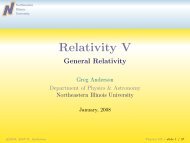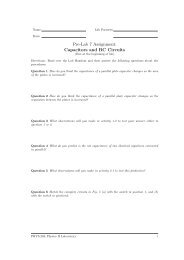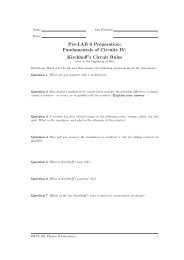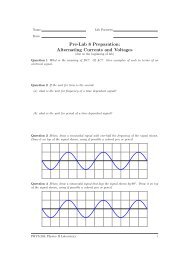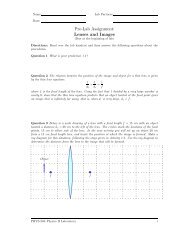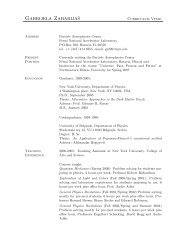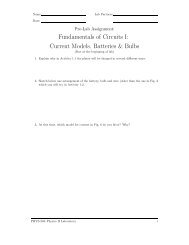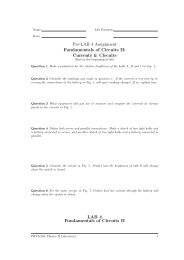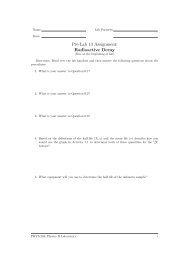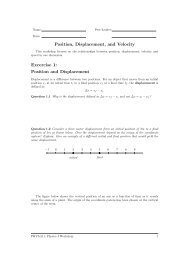Lab & Pre-lab #5: Voltage
Lab & Pre-lab #5: Voltage
Lab & Pre-lab #5: Voltage
Create successful ePaper yourself
Turn your PDF publications into a flip-book with our unique Google optimized e-Paper software.
Fundamentals of Circuits III: <strong>Voltage</strong> & Ohm’s Law v 0.1yyyxxxy is a function of x, whichincreases as x increases.y is a linear function ofx which increases as xincreases according to themathematical relationshipy = mx + b, where b isa constant called the yintercept.y is proportional to x. Thisis a special case of a linearrelationship where y = mx,and b, the y intercept, iszero.These graphs show the differences between these three types of mathematical relationship.y canincreaseasxincreases, andtherelationshipdoesn’thavetobelinearorproportional.Proportionality refers only to the special linear relationship where the y intercept is zero,as shown in the example graph on the right.Step 6: Usethefitroutineinthesoftware toseeiftherelationshipbetweenvoltage andcurrentfor a resistor is a proportional one.Step 7: Sketch your graphs on the axes shown previously.Question 3.3 Describe in words, what the mathematical relationship between the potentialdifference across a resistor and the current through that resistor is. Explain, based on yourgraphs.When the relationship between potential difference and current for a resistor is linear, itmeans that current changes proportionally to the change in voltage and the value of this proportionalitydoes not change no matter what the voltage is. When such a linear relationshipexists between current and voltage, the mathematical relationship between current and voltageis known as Ohm’s law. We now define a quantity known as resistance. Resistance is definedas the slope of the voltage vs. current graph.If potential difference is measured in volts and current is measured in amperes, then theunit of resistance is the Ohm, which is usually represented by the Greek letter ”omega” Ω.Question 3.4 Write a mathematical equation that expresses the relationship between V, I, andR.PHYS-204:Physics II <strong>Lab</strong>oratory 14




